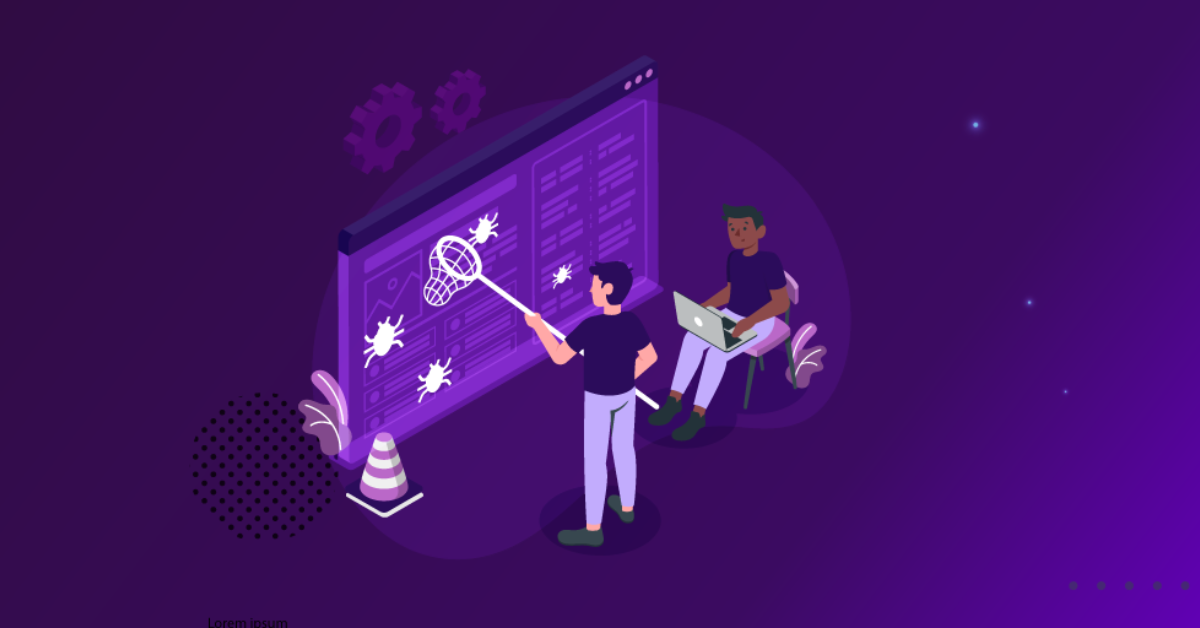Struggling with your current testing workflow? This is probably because you haven’t implemented an efficient test environment configuration. A test environment configuration has a very important role in not only reducing testing errors but also improving the overall software quality. By using advanced technologies like AI in software testing, you can reduce time consumption, error possibilities, and scalability issues.
These inclusions will also have a very important role in streamlining the test environment configuration for enhancing productivity and rapidly decreasing the delivery timelines. Struggling with AI in software testing? Don’t worry! We are here for you.
This blog will help you understand the challenges of traditional test environment management, some of the major components of the intelligent test environment, the best solutions, and effective practices to implement all the above configurations.
Challenges in Traditional Test Environment Configuration
Before we start discussing how we can implement intelligent solutions for test environment configuration, it is very important to develop a clear understanding about what are the challenges that you’re trying to solve with this process. To shed more light on this segment, we have mentioned some of the major challenges of the traditional test environment configurations:
1. Manual Configuration Errors: In traditional testing configurations, you have to set up the test environment manually. This environment can be highly prone to human errors, inconsistencies, and multiple misconfigurations. If you do not handle these errors properly, they can also cause failed tests, wasted resources, and delayed software releases.
You should also be aware that all these negative impacts will massively harm the reputation of your brand.
2. Lack of Standardization: In a traditional test environment, it is often configured differently across multiple teams. These configurations can cause discrepancies in test results and unpredictable software behavior. This behavior is mostly witnessed when the software is forwarded to the production phase.
3. Resource Allocation Bottlenecks: While you are in the provisioning and de-provisioning environments, you will have to implement significant manual efforts to ensure that these parameters are executed properly. This approach can cause delays and also inefficient resource allocation.
4. Scalability Issues: A traditional software environment will often struggle with the growing requirements of the application in terms of complexity. It will also face challenges when you expose it to the diverse testing requirements of modern app releases.
5. Inadequate Data Management: Finally, it is a common idea that managing test data across multiple environments is a challenging process when it is completely reliant on human testers. However, if you cannot maintain the consistency of the data, it can cause unreliable test results and poor defect tracking.
Primary Components Of An Intelligent Test Environment
Now that we have understood the major challenges of traditional test environment configurations let us divert our attention toward the primary components of an intelligent test environment. These components play a very important role in ensuring that all the above challenges are properly resolved:
- Automated Infrastructure Provisioning: The primary component of an intelligent environment is automated infrastructure provisioning. This helps you to automate the setup of test environments using infrastructure as code. It also has a very important role in ensuring the consistency, repeatability, and scalability of the entire infrastructure.
- Configuration Management Tools: The next component is the configuration management tools like Ansible, Puppet, and Chef. These tools will play a very important role in maintaining a standardized test environment. They achieve this goal by automating the configuration settings.
- Containerization And Virtualization: The containerization and Virtualization component uses tools like Docker and Kubernetes to efficiently isolate the test environment. It also has a very important role in implementing rapid provisioning and scalability across multiple testing environments.
- AI-Driven Test Environment Optimization: The next component includes AI-driven test environment optimization. In this practice, you have to use artificial intelligence and machine learning to analyze the system preferences, predict failures, and also dynamically adjust the test environment as per the requirements of the project. The goal of this implementation is to ensure the efficiency of the workflow.
- Cloud-Based Test Environments: Finally, you can use cloud-based environments like AWS, Azure, and Google Cloud to provide on-demand, scalable, and cost-effective test environments. These environments can easily integrate with continuous integration and continuous deployment pipelines.
You can utilize various cloud-based platforms like LambdaTest to also assist in executing real device testing through cloud-based device labs and incorporating AI for software testing. LambdaTest is an AI-powered test orchestration and execution platform that lets you perform manual and automation testing at scale with over 3000+ real devices, browsers, and OS combinations. This platform, with its test AI capabilities, lets you enhance your web and real device testing and helps you scale your test infrastructure without having to set up a test environment.
Intelligent Solutions for Test Environment Configuration
To assist you with the implementation of intelligent test environment configurations, we have mentioned some of the major strategies that you can consider in this segment:
1. Infrastructure as Code (IaC) for Automated Environment Setup
You can use tools like AWS Cloud Formation and Terraform to define and deploy test environments programmatically. This approach will have a very important role in reducing manual involvement and also ensuring consistency in the testing workflow.
To shed more light on this segment, we have mentioned a sample code snippet that can help in this step:
2. Self-Healing Test Environments with AI
You can use various machine learning models to monitor test environment data anomalies and automatically repair or reconfigure the testing workflows. These reconfigurations are done based on historical data and predefined policies.
Some of the areas that can benefit from this process include AI-based monitoring directions and predictive analysis to prevent environment crashes.
3. Service Virtualization for Simulating Complex Dependencies
You can integrate service virtualization tools like Hoverfly, WireMock, and Parasoft to create simulated test environments when real dependencies are unavailable or very costly to access.
The major benefits of this integration include early-stage testing, reduced costs for third-party dependencies, and consistent responses for automated tests.
4. Cloud-Based Test Environments for Scalability
As we already mentioned earlier, you can use cloud providers like AWS EC2, Azure DevTest Labs, and Google Cloud Test Lab to implement dynamic provisioning and autoscaling capabilities.
With these inclusions, you can adopt a pay-per-use model to reduce infrastructure costs, easy integration with CI/CD pipelines, and scalable resources based on your testing requirements.
5. Continuous Integration and Deployment for Dynamic Test Environments
You can consider integrating continuous integration and continuous deployment pipelines within your test environment automation to ensure that the environment is provisioned, configured, and validated along with your software delivery process.
An example workflow for this process can be: the pipeline triggers the environment provisioning as soon as the developer commits the code. Then, the automated tests run in the newly provisioned environment, and the environment is finally decommissioned after the testing process.
6. Configuration Management for Consistency
You can use tools like Chef, Ansible, and Puppet to create standardized configurations across all your testing environments. This is a very important step to reduce the inconsistencies and also ensure repeatability in the workflow. The following code snippet will help you better understand the implementation of this process:
7. Test Data Management with Synthetic Data Generation
Finally, you must understand that realistic test data will have a very important role in ensuring comprehensive testing. You can use AI-powered synthetic data generation tools like Tonic.AI and Delphix to access anonymized and structured test data without violating privacy policy regulations.
These tools will assist you in generating realistic test data to reduce dependency on production data while complying with GDPR and HIPAA compliances.
Best Practices for Implementing Intelligent Test Environment Solutions
Finally, let us go through some of the best practices that you must implement within your workflow while using intelligent test environment solutions. These practices will streamline the entire procedure and also improve the quality of the application that you’re currently working on:
- It is very important to define your environment requirements clearly before proceeding with the development and testing phases. During this process, you must identify specific configurations, dependencies, and constraints that can impact your automation procedures.
- We suggest the testers adopt our DevOps culture. This culture will encourage collaboration between different teams like development, testing, and operations teams. The end goal for this collaboration is to streamline the test environment management and ensure that appropriate steps are taken at appropriate times.
- You must aim to automate everything that is possible to be automated. This effort will help reduce manual interactions as you’ll be using automation tools for provisioning, configuration, and also test monitoring. This will also free up the time of the human testers to focus on other creative and unique areas of the project.
- It is a good idea to use AI-based monitoring for detecting and resolving issues before they impact the testing process. It will also help you to detect the errors earlier in the development cycle.
- We suggest the testers integrate the entire testing workflow with continuous integration and continuous deployment pipelines. These practices will ensure the test environments are dynamically provisioned and also decommissioned as part of the software delivery workflow.
- It is equally important to constantly track the current status of the test environment. Based on the tracking data, you have to optimize the resource allocation and also eliminate unnecessary costs to ensure that your testing efforts remain economical.
- Finally, we advise the testers to maintain proper security and compliance throughout the implementation process. To achieve this, you can implement security policies, access controls, and compliance checks within the test environment. Practices like these will massively help to safeguard the data and infrastructure.
The Bottom Line
Based on all the factors that we have put forward in this article, we can easily say that intelligent solutions for test environment configuration will change the way you manage your testing infrastructure. By using all the advanced configurations and best practices that we mentioned in this article, you can enhance your testing practices, improve the software quality, and reduce the delivery time frames.
Moreover, as you continue to embrace all the DevOps and agile practices, you must implement intelligent test environment solutions to achieve scalable, robust, and efficient software testing practices within your development and testing workflow.
Finally, all these inclusions will play a very important role in putting your organization ahead of the curve and helping you provide the best end-user experience to your customers. Factors like these will go a long way in bringing your company to the limelight and constantly expanding your positive brand reputation.
Stay in touch to get more updates & alerts on Picnob! Thank you



